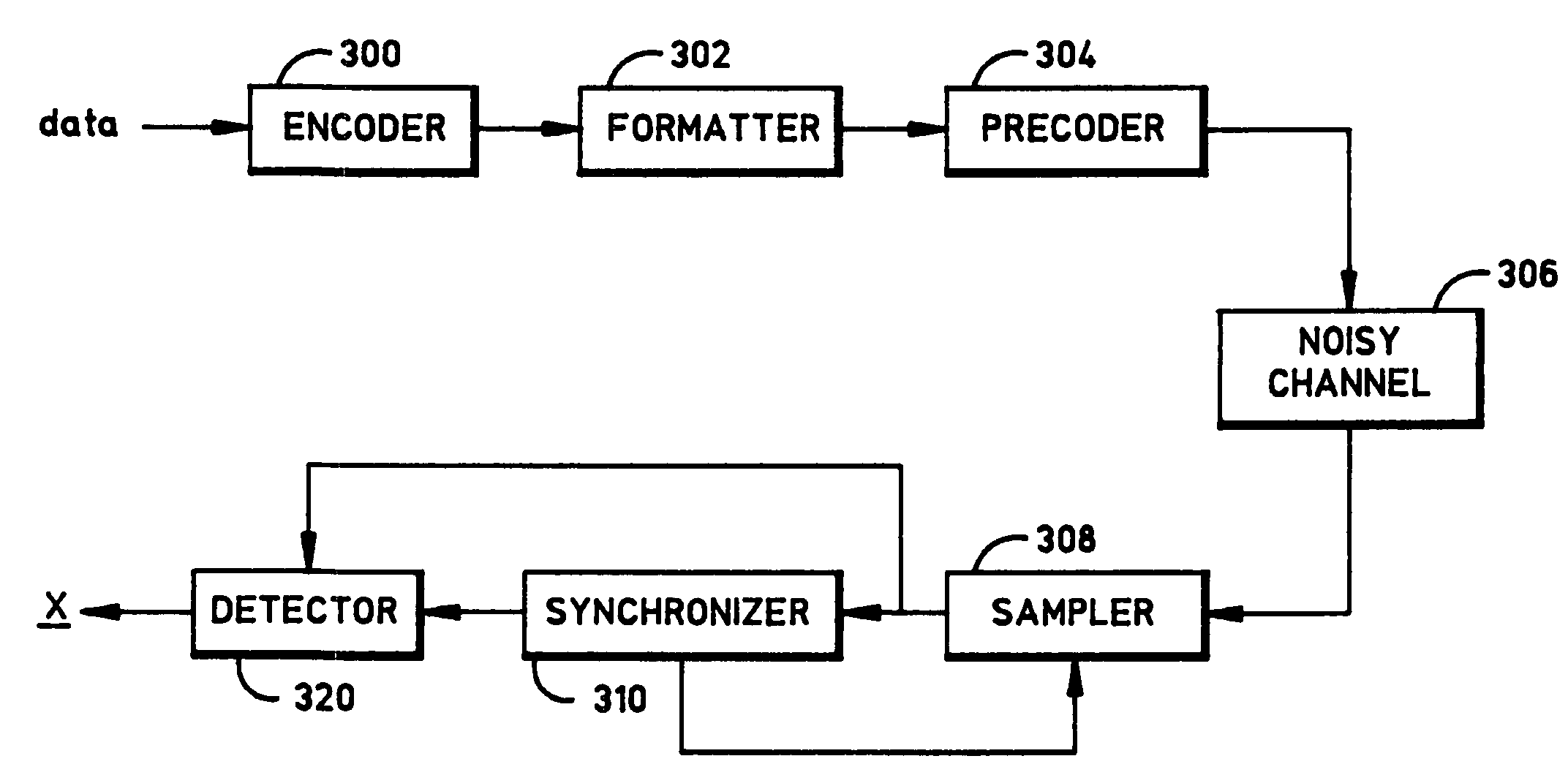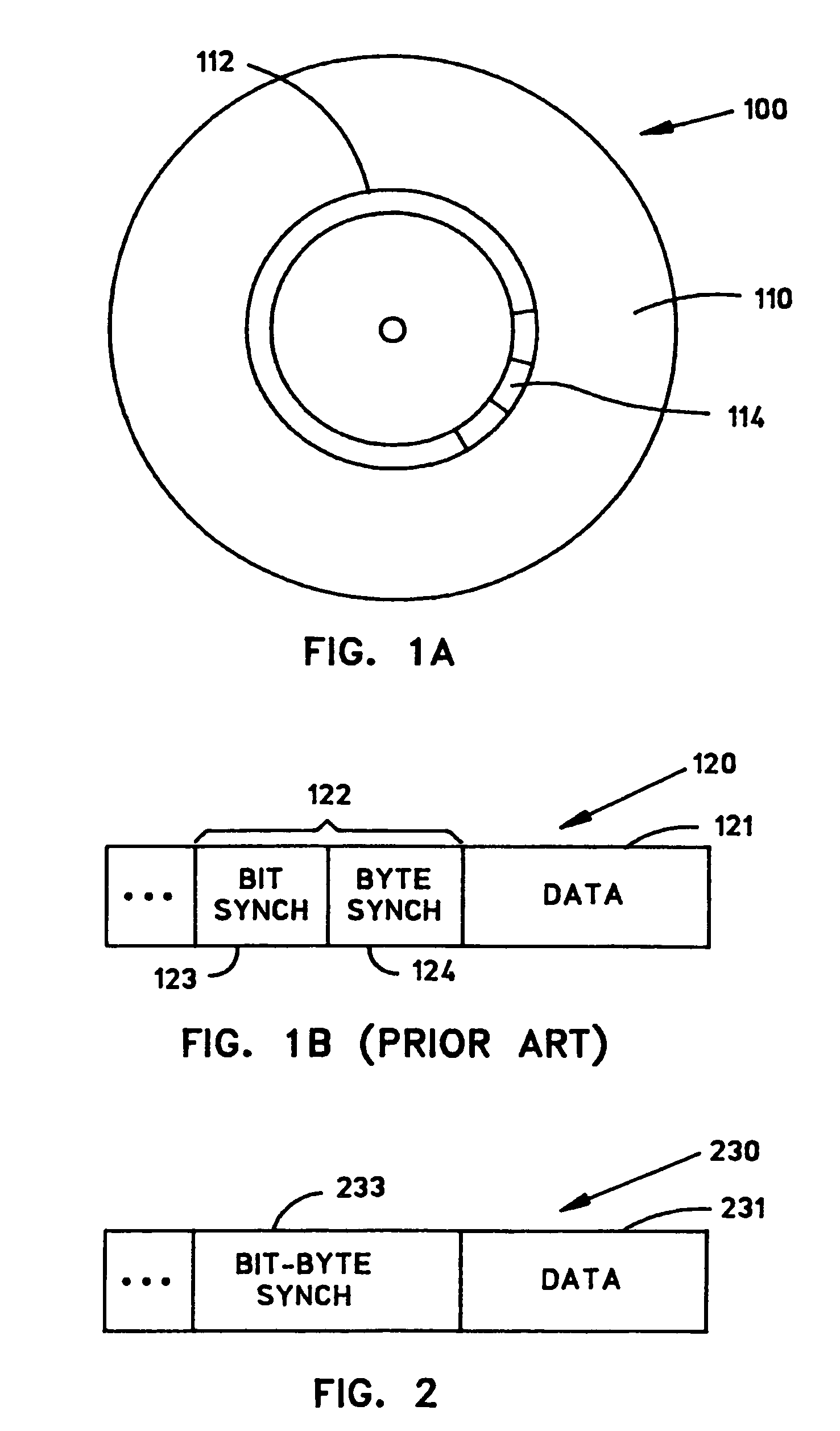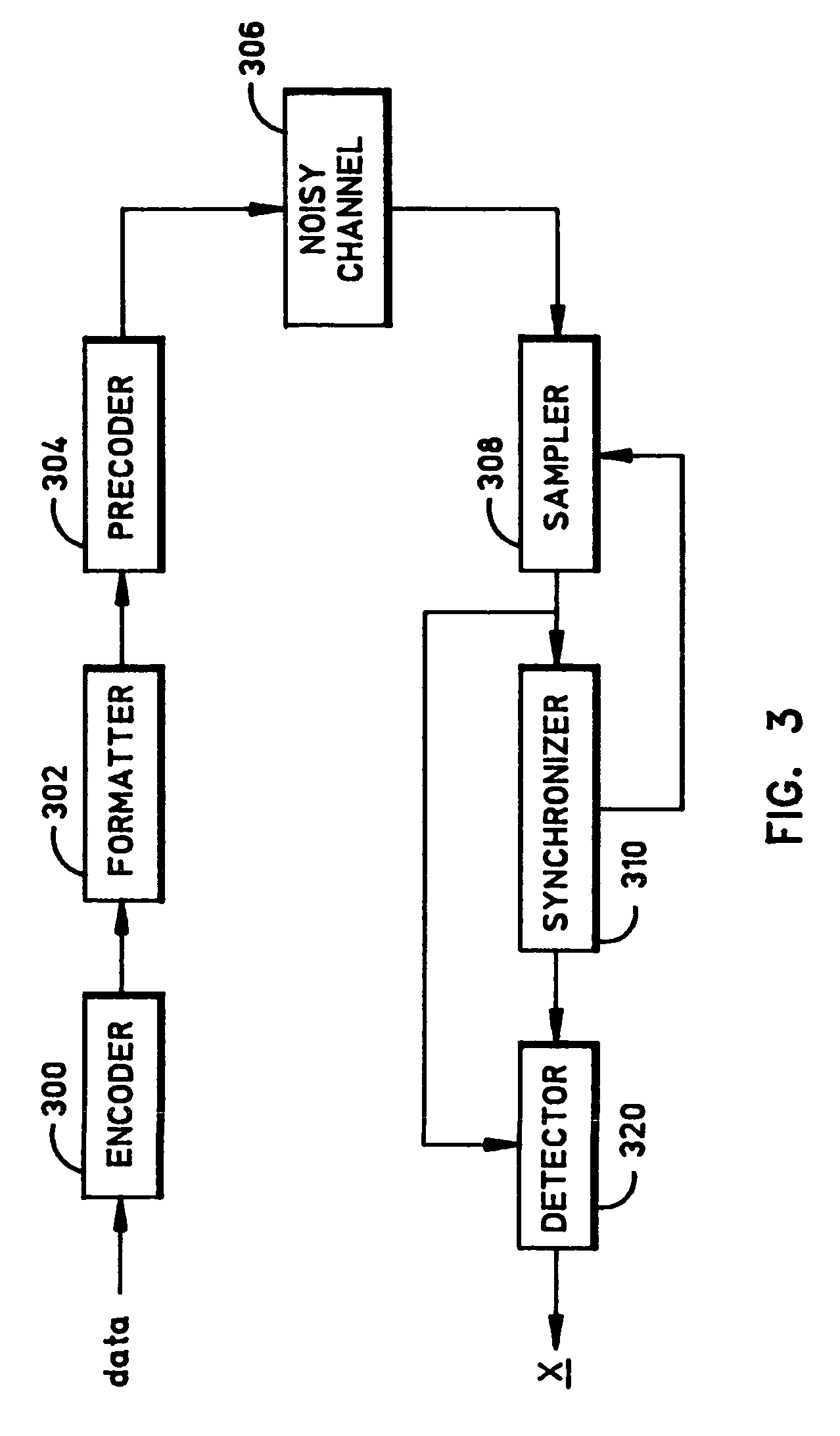Method for bit-byte synchronization in sampling a data string
a data string and bit-byte synchronization technology, applied in the field of data coding, can solve the problems of loss of both bit and byte synchronization, long synchronization pattern, and significant possibility of synchronization failur
- Summary
- Abstract
- Description
- Claims
- Application Information
AI Technical Summary
Benefits of technology
Problems solved by technology
Method used
Image
Examples
example 2.1
[0034]Assume the string[0035]. . . 1111, u, x=( . . . 11111011011111101101111111011 . . . ),
where u is defined in (1). Precoding this string yields[0036]1 / (1⊕D2)( . . . 1111,u,x)=( . . . 11001001001100100100110011100 . . . )
Next, assume that sampling starts at point 0.35 (which is unknown) and the following samples are obtained:[0037]−0.05 −0.2 −1.34 −0.29 1.1 −0.77 −0.35 1.11 −0.76 −0.42 1.39 0.33 −1.39 −0.28 1.1 −0.77 −0.36 1.12 −0.76 −0.43 1.39 0.33 −1.39 −0.3 1.3 0.63 −0.34 −1.23 −0.6 . . .
By adding white gaussian noise with a variance of 0.06 to the samples above, for instance, the following samples may be obtained:[0038]−0.09 −0.12 −1.37 −0.22 1.12 −0.75 −0.38 1.07 −0.74 −0.46 1.31 0.35 −1.3 −0.29 1.02 −0.86 −0.38 1.21 −0.69 −0.47 1.37 0.27 −1.37 −0.31 1.25 0.7 −0.25 −1.33 −0.57 . . . =v0v1 . . . v28
By applying at each step the algorithm, notice that for each 0≦j≦7 and vi=(vi, vi+1, . . . vi+15), di,j=d(vi, uj) gives:
[0039]
idi,0di,1di,2di,3di,4di,5di,6di,709.4412.7816.5720.83...
example 2.2
[0057]As an example of Algorithm 2.2, similarly to Example 2.1, assume a string:[0058]. . . 1111, u, x=( . . . 11111011011111101101111101010 . . . ),
where u was defined in (1). Precoding this string, we obtain
[0059]11⊕D2(…1111,,u_,x_)=(…11001001001100100100110001000…)
Next, assuming that sampling of the precoded string starts at the unknown initial point 1.97, the following samples are obtained:[0060]−0.97 −0.05 0.96 0.06 −1.03 0.96 0.06 −1.03 0.94 1.04 −0.95 −1.05 0.96 0.06 −1.03 0.96 0.06 −1.03 0.94 1.04 −0.95 −1.03 −0.04 0.98 0.06 −1.01 −0.04 0.98 0.04 . . .
By adding white gaussian noise with a variance of 0.06 to the samples above, for instance, the following samples may be obtained:[0061]−0.96 −1.01 0.98 0.2 −0.96 1.02 −0.04 −0.92 0.86 0.94 −0.87 −1.1 0.92 0.04 −1.09 0.87 0.01 −1.09 0.99 0.96 −0.96 −0.99 0.02 0.94 0.12 −1.03 −0.12 1.01 0.08 . . . =v0 v1 . . .[0062]. . .
By applying at each step the algorithm, notice that for each 0≦j≦7 and vi=(vi, vi+i, . . . , vi+15), di...
example 2.3
[0078]This example describes the same situation as Example 2.2, where 1=7, (al, al+1, al+2)=(0.875, 1, 1.125) and (dl, dl+1, dl+2)=(0.5, 0.14, 1.13). Notice that dl+2=1.3>2(0.5)=2dl. Thus, according to Algorithm 2.3:
[0079]r=dl+1al+dlal+1dlal+1=0.97
Since the initial (unknown) sampling point was 1.97 and i=2, according to Algorithm 2.3, f is reset according to f←f−(r−1)=1.97−(0.97−1)=2 and sampling starts at points
f+i+20, f+i+21, f+i+22 . . . =24, 25, 26, . . .
Thus, perfect bit-byte synchronization occurs in this case.
[0080]FIG. 6 illustrates a method 650 according to Algorithm 2.3. The method is represented by a flow diagram with the understanding that it would be embodied either as a processor program comprising a series or sequence of commands executed by the synchronizer of FIG. 152. Preferably, the method 650 operates on a string . . . 1111, u, x, and is preceded by pre-coding the string as discussed above, which produces the pre-coded data string y. The method begins in step ...
PUM
| Property | Measurement | Unit |
|---|---|---|
| Euclidian distances di | aaaaa | aaaaa |
| Euclidian distance | aaaaa | aaaaa |
| Euclidian distances | aaaaa | aaaaa |
Abstract
Description
Claims
Application Information
 Login to View More
Login to View More - R&D
- Intellectual Property
- Life Sciences
- Materials
- Tech Scout
- Unparalleled Data Quality
- Higher Quality Content
- 60% Fewer Hallucinations
Browse by: Latest US Patents, China's latest patents, Technical Efficacy Thesaurus, Application Domain, Technology Topic, Popular Technical Reports.
© 2025 PatSnap. All rights reserved.Legal|Privacy policy|Modern Slavery Act Transparency Statement|Sitemap|About US| Contact US: help@patsnap.com



